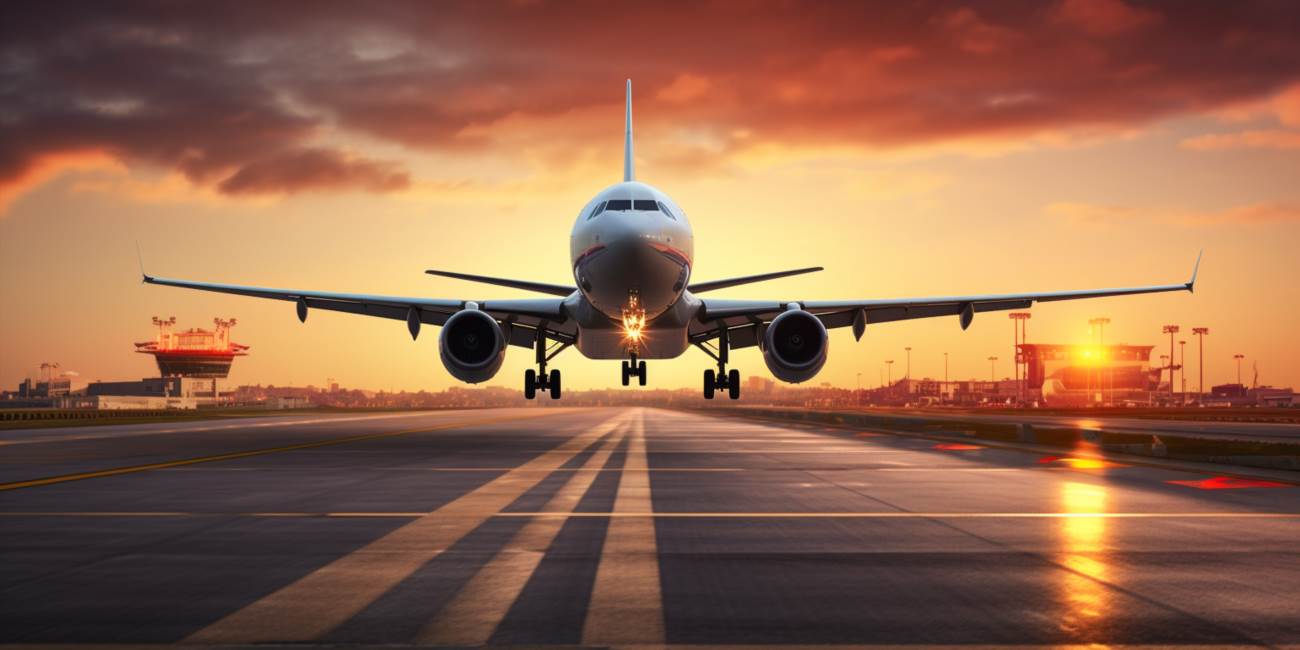At the forefront of air travel are the jumbo jets, behemoths like the Boeing 747 and Airbus A380. These colossal giants can carry hundreds of passengers across vast distances, offering an unparalleled experience in luxury and comfort. Their iconic double-deck designs make them unmistakable in airport landscapes.
For more efficient short to medium-haul flights, narrow-body aircraft step into the spotlight. The Boeing 737 and Airbus A320 families are workhorses of the skies, shuttling passengers between regional destinations with remarkable fuel efficiency. Their single-aisle configurations facilitate quick turnarounds, ensuring optimal use of airport resources.
Stepping into the era of long-range travel, twin-engine wide-body jets redefine the possibilities. Aircraft like the Boeing 777 and the Airbus A350 boast extended ranges, connecting distant cities with non-stop flights. These fuel-efficient marvels strike a balance between capacity and range, making them versatile options for airlines operating global networks.
Meanwhile, regional jets cater to smaller airports and shorter routes, providing essential connectivity to underserved markets. Embraer’s E-Jet series and Bombardier’s CRJ family exemplify the nimbleness and efficiency required for regional air travel.
The advent of ultra-long-haul flights has seen the rise of ultra-large aircraft, such as the Boeing 777X and the forthcoming Airbus A350-1000ULR. These giants push the boundaries of range, allowing airlines to connect distant points without the need for layovers, revolutionizing the concept of direct intercontinental travel.
For short-haul flights and domestic operations, turboprop aircraft like the ATR 72 and Bombardier Dash 8 provide a cost-effective solution. Their ability to operate from shorter runways makes them indispensable for reaching airports in remote or challenging locations.
When it comes to freight, cargo planes like the Boeing 747-8F and the Airbus A330-200F take center stage. These specialized aircraft facilitate the global movement of goods, ensuring a seamless supply chain and timely delivery of cargo across continents.
Summing up this airborne panorama, the world of commercial planes is a testament to human ingenuity, constantly evolving to meet the demands of a connected planet. From the sky-piercing jumbos to the nimble regional jets, each type serves a unique purpose, contributing to the vibrant tapestry of air travel.
Latest generation of narrow-body jets reshapes aviation
The aviation industry is currently undergoing a transformative phase with the introduction of the latest generation of narrow-body jets. These cutting-edge aircraft are reshaping the way people travel and the efficiency of airline operations.
The Boeing 737 MAX and the Airbus A320neo are at the forefront of this revolution. Both aircraft feature state-of-the-art fuel-efficient engines, such as the LEAP-1A engine on the A320neo and the CFM International LEAP-1B engine on the 737 MAX. This translates to not only reduced operating costs for airlines but also a smaller environmental footprint.
One of the standout features of these narrow-body jets is their emphasis on passenger comfort. With innovations in cabin design and layout, airlines can optimize seating arrangements without compromising on passenger experience. The Boeing Sky Interior and the Airbus Airspace cabin are prime examples, offering enhanced lighting, larger windows, and quieter engines for a more pleasant journey.
Moreover, these aircraft incorporate advanced avionics and connectivity solutions. Passengers can enjoy high-speed internet and entertainment options, while airlines benefit from real-time data monitoring and predictive maintenance capabilities. This connectivity not only improves the overall passenger experience but also contributes to more efficient and reliable flight operations.
The range capabilities of these narrow-body jets are noteworthy. Enhanced fuel efficiency and aerodynamics enable airlines to operate longer routes, opening up new possibilities for direct flights and reducing the need for layovers. This is a game-changer for both passengers and airlines, providing more flexibility and convenience in travel.
Furthermore, the latest narrow-body jets prioritize environmental sustainability. With a commitment to reducing carbon emissions, these aircraft incorporate lightweight materials, advanced winglets, and aerodynamic improvements. Airlines are increasingly focused on achieving fuel efficiency and meeting environmental standards, aligning with global efforts to make aviation more sustainable.
As airlines continue to modernize their fleets with the latest generation of narrow-body jets, the aviation landscape is evolving. The competition between Boeing and Airbus in this segment is fierce, with each manufacturer striving to offer cutting-edge technology and features to attract airlines and passengers alike. The result is a paradigm shift in the way we perceive and experience air travel.
Twin-engine wide-body aircraft open new long-haul routes

The era of aviation has witnessed a transformative leap with the advent of twin-engine wide-body aircraft, revolutionizing the possibilities for long-haul travel and opening up new frontiers for transcontinental routes. These engineering marvels, characterized by their spacious fuselage and powerful dual engines, have redefined the dynamics of modern air travel.
One of the distinctive features that sets wide-body aircraft apart is their expansive cabin space, providing passengers with a more comfortable and commodious journey. This design innovation not only caters to the comfort of travelers but also enables airlines to offer a diverse range of amenities and services, transforming the in-flight experience into a journey of luxury.
The introduction of twin-engine wide-body aircraft has particularly revolutionized long-haul flights. The efficiency of dual engines enhances fuel economy, allowing these aircraft to cover vast distances without the need for frequent refueling stops. This extended range has unlocked the potential for airlines to introduce non-stop services on transcontinental routes, connecting distant cities and continents seamlessly.
These aircraft have become the backbone of modern air travel, with their versatility extending beyond passenger flights to cargo operations. The wide-body design accommodates substantial cargo capacity, facilitating the transportation of goods on a global scale. This dual-purpose capability further underscores the significance of twin-engine wide-body aircraft in reshaping the logistics and connectivity of the world.
With the capability to cover vast distances, these aircraft have become pivotal in connecting major hubs across continents. The rise of transcontinental flights using wide-body aircraft has not only shortened travel times but has also spurred economic and cultural exchanges between distant regions. It’s a testament to how advancements in aviation technology can bridge the geographical gaps that once seemed insurmountable.
As airlines continue to expand their fleets with cutting-edge twin-engine wide-body aircraft, the future of long-haul and transcontinental travel looks increasingly promising. Passengers can anticipate more direct routes, reduced layovers, and an overall enhancement of the air travel experience. The skies are no longer limits but expansive pathways that bring the world closer, thanks to the remarkable capabilities of these modern marvels.
Jumbo jets still unrivaled for mass air travel
The era of mass air travel has witnessed the dominance of jumbo jets, those behemoths of the skies that continue to soar above the competition. These airborne leviathans, often referred to as very large aircraft, have become synonymous with the idea of transporting large numbers of passengers across continents in a single, impressive sweep. The engineering marvels behind these giants have allowed them to maintain their unparalleled position in the world of aviation.
When we talk about high capacity in the realm of air travel, the conversation invariably circles back to the iconic jumbo jet. These giants of the sky are designed to accommodate a staggering number of passengers, making them the go-to choice for airlines catering to the demands of modern mass transportation. The very large aircraft category encompasses planes that push the boundaries of what was once thought possible in terms of both size and passenger volume.
Picture this: a jumbo jet taxiing down the runway, its immense wingspan casting an imposing shadow. It is not merely an aircraft; it’s a symbol of the ability to connect people and places on a grand scale. The allure of these very large aircraft lies not only in their sheer size but in the logistical marvels that unfold within their cavernous interiors. With multiple decks and an array of seating configurations, these planes redefine the notion of high capacity air travel.
While technological advancements have introduced more fuel-efficient and streamlined alternatives, the jumbo jet remains unrivaled in its ability to carry hordes of passengers across oceans and continents. The very large aircraft category may have seen contenders, but none have managed to dethrone the reigning champions of mass air travel.
The comparison becomes even more evident when we delve into the numbers. Consider a hypothetical scenario: a jumbo jet with its high capacity can transport hundreds more passengers than its counterparts in a single journey. This efficiency, coupled with the economics of scale, reinforces the significance of these very large aircraft in the global aviation landscape.
In a world where speed and efficiency are paramount, the jumbo jet stands tall, literally and metaphorically. Its ability to ferry a multitude of passengers in a single flight underscores its unwavering relevance. As other aircraft types strive for innovation, the very large aircraft category, led by the quintessential jumbo jet, continues to be the epitome of mass air travel.






